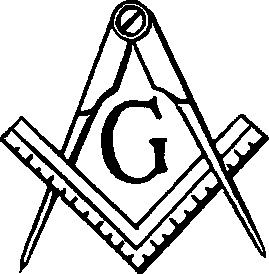In order to satisfy my thirst for Masonic knowledge without spoiling the experience of hearing it for the first time in my lodge, I have read a variety of papers about masonry in general.
http://www.knightsofthenorth.com/documents/laudablepursuit.pdfThis paper struck home. What was most interesting is that many of the problems they highlight are being addressed by the lodge I'm in.
http://www.masonicdictionary.com/stated.htmlIt seems some lodges always open on the Master Degree, and Entered
Apprentices and
Fellowcrafts are excluded. Our lodge made the effort to open on the EA degree last month, specifically so I could attend and feel welcome. Tomorrow I'll join the meeting as a
FC, and take my examination. If there are no
EA's present, they will open on the
FC degree.
I am not well known in South Haven. My wife is, though: she grew up a mile from where we live now, and her parents taught in the area. Still, she does not know any local Masons either. My ties to the community are weak: my work requires extensive travel most of the time, and most of my
colleagues are scattered across the country from Boston to San Diego. My boss is in Texas, and my customers have been all over the US. Lately I've been working from home and traveling infrequently, although that will change soon.
I'll discuss my reasons for joining another day, but it had been a long-term goal of mine. Last summer we saw an announcement that the local Mason lodge (Cornerstone Lodge #158) was having an open house, and I took my son who was visiting from California.
I was impressed with the lodge and how it was built. I loved the symbolism of the lodge. One of the officers sat down with me and answered my questions:
- A mason must be a man of good character and believe in a Supreme being. That's it.
- Jews can join. I'm not sure if there are any in our lodge -- or in fact, if there are any in the area at all. This is important to me for a variety of reasons, not the least of which is that my sister has recently converted to Judaism.
- The local lodge would not exclude a black person; however almost all black men interested in Masonry join a local Prince Hall lodge instead of ours.
- Catholics, I was assured, are not only welcome to join, but are presently allowed to join by their church. I've read later that the
Catholic Church's position on Masonry is not entirely clear, or consistent.
- Dues are nominal; our lodge dues are $25/year. And each degree costs another $25 (up to Master)
I tendered my application in August, and had my in-house interview in September. One of the interviewers knew my stepson from hunter-safety, so that went well.
I was supposed to become
initated in October, but that date was postponed to January because I had to be in
Cincinnati. I was chaffing to become part of the lodge, but I waited patiently, and I'm glad I did.
What is my lodge doing right?
- My lodge welcomed me, a relative stranger to the area.
- My lodge provides lectures at least once a month to new Masons
- My lodge opens on whatever degree is necessary so that we can all attend the meetings.
- My lodge does not try to cram three degrees worth of understanding into one day.
- My lodge listens to my questions, and answers them patiently.
- I was invited to play cards last Friday, and I had a great time.
You might wonder if I think the lodge is doing anything wrong. The fact is, I don't know enough about Masonry, the lodge, the rules to hold an informed opinion.
The other night I asked why beer wasn't part of the refreshments, and if it was possible to bring on off nights. The answer wasn't clear, what was clear that while it may not be explicitly forbidden there were members of our lodge who had very strong objections to it. OK, no beer.
But Freemasons used to meet in Taverns. And, based on the scramble to find a designated driver to the Master Mason Degree Conferral (which will be an AASR rite in the Valley of Grand Rapids -- about 60 miles away), it appears that not all Masonic events are alcohol free.
Not to mention that one third of my wages, or so I've been informed, are wine.
The fact is, I'm not joining the Masons so I have a place to go drink, so this is not a big deal.









